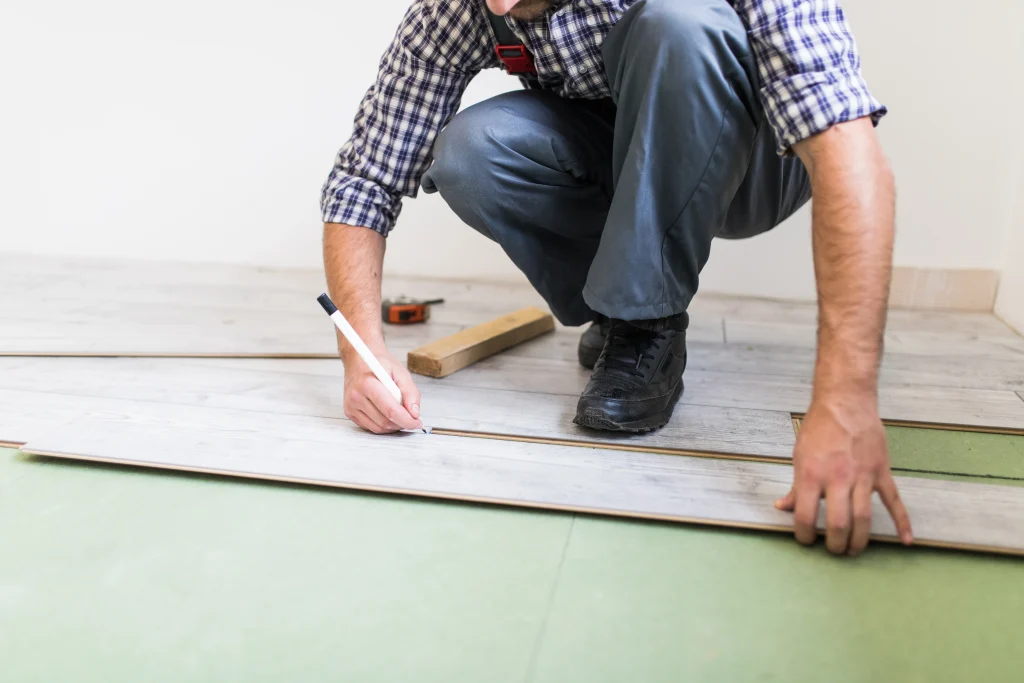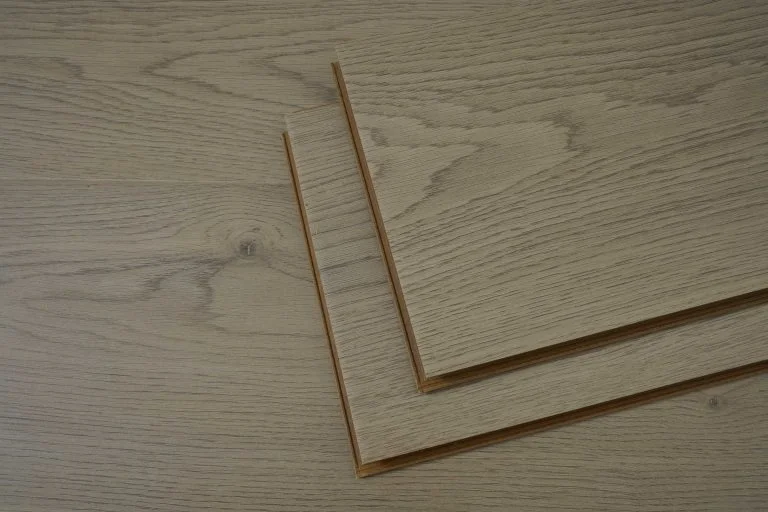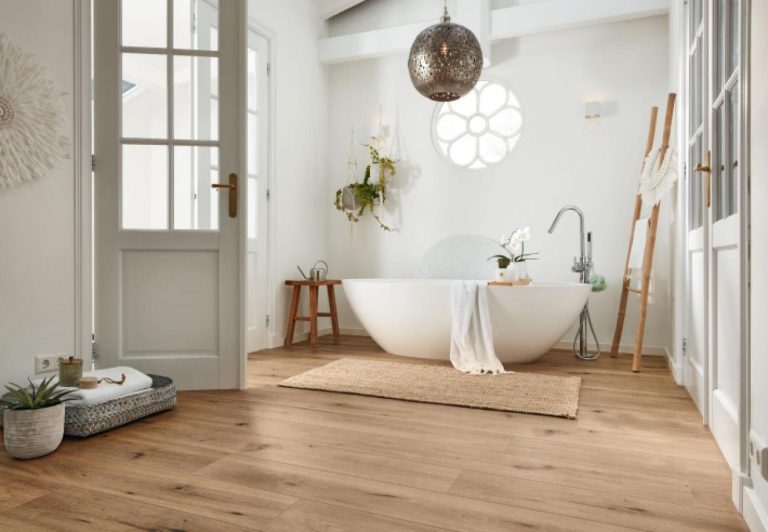Laminate flooring offers lots of design choices. It’s strong and looks nice. You can pick easy straight layouts, fun diagonal styles, or fancy herringbone and chevron patterns. Each one can make a room feel unique. This guide talks about popular laminate floor patterns. It gives tips for choosing the best one. It also shares clear steps for installation, from getting the subfloor ready to using clever alignment tricks. Besides, you also can learn simple ways to keep your floors bright and clean for years. Whether you’re a DIY beginner or a skilled pro, this helpful guide will lead you to a perfect, long-lasting laminate flooring project.

What are the differences between laminate flooring and other types of flooring?
Straight Patterns
Straight patterns are the most popular and traditional laminate floor designs. You place planks next to each other, all pointing the same way. This makes a clean, smooth look. It’s perfect for small or narrow rooms. Why? It makes them feel longer. Laminate flooring has a realistic top layer. It looks like wood or stone. This makes straight patterns even prettier.
Diagonal Patterns
Diagonal patterns add excitement to your floors. You lay planks at an angle, usually 45 degrees, compared to the walls. This style is great for big rooms or open spaces. It brings a lively, cool feel. But diagonal layouts need more cutting. They also need careful work during installation. Still, the bold look is worth it.
Herringbone and Chevron Patterns
Herringbone and chevron patterns are fancy and creative. In herringbone, planks make a zigzag shape. Chevron uses planks cut to form sharp V-shapes that join neatly. These patterns are awesome for stylish living rooms or entryways. Laminate flooring is strong. So, it’s great for busy areas where these designs pop.
What Should You Consider When Choosing a Pattern?
Room Size and Layout
The size and shape of your room are really very important when you are picking a pattern. In small rooms, straight or diagonal patterns can make the space look bigger. But in big rooms, bold herringbone or chevron designs shine. They add charm without making the room feel too busy.
Aesthetic Preferences
Your personal style is super important. Do you like simple, straight lines? if you wanted bold, eye-catching designs, Laminate flooring has tons of colors and textures. So, there’s something for everyone, whether you love modern or classic designs.
How should we properly install the laminate flooring?
Tools and Materials
You need some basic tools when install laminate floors. Like a tape measure, a hand saw or jigsaw, spacers, a tapping block, a pull bar, and a rubber mallet. A moisture meter is handy, too. It checks the subfloor’s condition.
For great results, try Ye Hui products. Their top-notch laminate flooring is tough and easy to put in. They also provide design service.

Subfloor Preparation
Cleaning and Leveling the Subfloor
A clean, flat subfloor is key for a good installation. Sweep away dirt and dust. Fill any holes or bumpy spots. This gives your laminate flooring a strong, even base.
Moisture Barriers and Underlayment
A moisture barrier keeps water from harming your floor. It’s super important in basements or damp areas. Underlayment makes the floor comfy. It also cuts down noise and keeps the floor steady.
What Are Advanced Techniques for Installing Laminate Floor Patterns?
Achieving Seamless Alignment in Straight Patterns
To make a perfect straight pattern:
- Start with the first row along the longest wall.
- Use spacers to keep gaps even around the edges.
- Lock planks together tightly. A tapping block makes this easier.
Precision in Diagonal Pattern Installation
Diagonal layouts take careful planning. Here’s how to do it:
- Draw lines at 45-degree angles across the room.
- Cut edge pieces neatly to fit against walls.
- Keep checking alignment. This keeps the pattern straight.
Step-by-Step Guide to Herringbone and Chevron Installation
For herringbone:
- Find the room’s centerline to begin.
- Lay planks in a zigzag shape. Alternate them at right angles.
- Make sure each piece locks in tight before moving on.
For chevron:
- Cut planks at exact angles, usually 45 degrees, for clean V-shapes.
- Line up each pair carefully along marked lines.
- Check connections often. This prevents gaps or uneven spots.
Recommendations for Ye Hui Products in Installation
Why Choose High-Quality Laminate Planks for Your Project?
Choosing the right laminate planks is super important for a great floor. Laminate flooring is strong and doesn’t cost too much. It’s made of layers pressed together tightly. The top layer looks like real wood, stone, or tile. A protective layer stops scratches and stains. The core is high-density fiberboard (HDF). It makes the floor strong and steady. This makes laminate flooring awesome for homes or businesses.
Laminate flooring lasts a long time. It has AC ratings from AC3 to AC6. These are good for light home use or heavy commercial spaces. Waterproof options are great for damp places like basements. Picking high-quality laminate planks means you’ll have a pretty, long-lasting floor.
Which Specialized Tools Should Professionals Use?
Installing laminate flooring is easy with the right tools. You need a tape measure and a hand saw or jigsaw for clean cuts. Spacers keep gaps even. A rubber mallet locks planks gently. A tapping block and pull bar help make tight connections.
For pros who want to work fast and accurately, Ye Hui has special tools. Their products make installation smooth. They also keep the flooring in top shape.
Maintenance Tips for Long-Lasting Results
How Can You Keep Laminate Floors Looking New?
Keeping laminate floors bright is simple with good habits. Wipe or vacuum every day to clear dust and dirt. Once a week, or more in busy spots, clean with a damp mop or cloth. Use warm water and mild soap. Don’t let water sit on the floor too long. It could cause damage.
To stop scratches or dents, put pads under furniture legs. Use soft wheels on chairs. Lift furniture instead of dragging it. Stay away from harsh cleaners or rough scrubbers. They can hurt the floor’s protective layer.
What Are Effective Methods for Repairing Minor Damages?
Small scratches or dents happen sometimes. But they’re easy to fix. For light scratches, use a laminate repair kit. Pick one that matches your floor’s color. These kits have wax pencils or markers to fill and hide flaws.
For deeper damage, like chipped corners or gouges:
- Clean the spot well.
- Put repair paste or putty on with a spatula.
- Smooth out extra material. Let it dry completely before walking on it.
If a plank is really damaged, replace it. Laminate floors use a click-lock system. This makes it easy to take out and replace one piece.
FAQs
Q1: Can I install laminate flooring over existing tiles?
Yes! Laminate flooring works over tiles, concrete, or plywood. It’s a floating floor. Just make sure the subfloor is clean and flat.
Q2: What thickness should I choose for my laminate flooring?
It depends on what you need. Thinner planks (7mm) are cheaper. Thicker ones (12mm) are better for soundproofing and uneven subfloors.
Q3: Are there eco-friendly options for laminate flooring?
Yes! Many laminate floors use recycled materials. They meet standards like E0 or CARB P2. These keep emissions low, making them safe for your home





